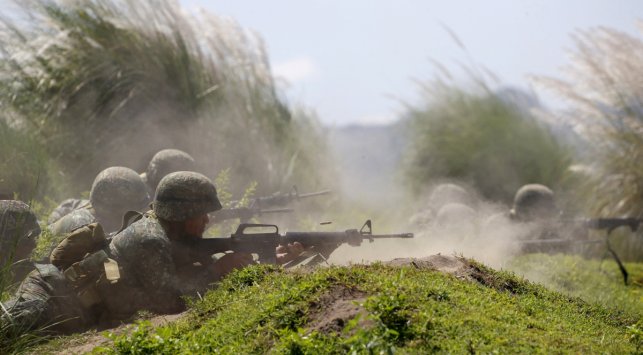
While Philippine government is smelling victory after the recent death of Abu Sayyaf Group's (ASG) notorious leader Abu Misaya, for the Philippine soldiers it is still too early to celebrate as another terror group, believed to have links with ISIS, is disturbing the new Duterte administration in the Southern Philippines.
Who are they?
Based in Central Mindanao, the Maute Brothers Group or locally known as the Islamic State in Lanao (ISIL) have surprised military troops in their first heavy firefight in Butig town, Lanao Sur Province in November last year.
The military was not expecting such advanced fighting capability from the Maute Brothers Group. The terror group used sophisticated firearms and warfare tactics that led them to capture the seat of government in the town of Butig, which was again recaptured by Philippine foot soldiers. This is not the first time that militants are facing the Maute Group. Soldiers earlier belittled the group when it ambushed a military checkpoint in 2013. However, the group evolved into serious a terror group after joining the ISIS.
President Rodrigo Duterte was quoted by ABS CBN news saying that international terrorist group ISIS is now connected with the local terror group, Maute. "Finally, the intelligence community advised me that ISIS has finally connected with the group in the Philippines called the Maute. There's a raging war now in Lanao," he said, as reported.
A black ISIS flag has been noted in areas controlled by the Maute Group. The intelligence community also reported that its leaders, Omar and Abdullah Maute, have already pledged allegiance to the Islamic State and even use the ISIS name and symbol.
Sporadic firefights between the Maute group and Philippine soldiers is now in its fifth month and have claimed the lives of a dozen of soldiers and thus the Maute group's capability should not be underestimated despite its meager number compared with other armed militant groups. The military estimated the Maute group with at least 100 heavily armed fighters.
Adding to the complexity of the situation is a number of the Maute members, who are erstwhile members of the Moro Islamic Liberation Front (MILF), the largest Islamic revolutionary organization, who entered into a peace dialogue with the Philippine government. The Philippine military will face a huge challenge because Maute members are married to relatives of MILF members.
Moreover, the Philippine military also arrested suspected members of the Maute Group who were responsible for the September bombing of Davao City night market that killed 14 people on the spot.
Why such groups exit?
Poverty in impoverished areas in the Southern Philippines has caused ordinary civilians to raise arms against the government. Feeling excluded, militant and revolutionary organisations are keen on establishing an autonomous government. Other than the ASG, Maute and MILF organizations, the Philippine government also has to deal with other militant organizations such as the Bangsamoro Islamic Freedon Fighers (BIFF), Moro National Liberation front (MNLF) and the New People's Army (NPA).
National Director Rolly Pelinggon of Mindanaoans for Mindanao, a civil society, told International Business Times that the root cause of the complicated insurgencies of the Southern Philippines is inequitable share of wealth and socio-economic opportunities of the country. Pelinggon said that while Mindanao contributes to more than 40% of the food requirements of the country, Mindanao is only getting 22% from the national budget share, which has people impoverished and deprived. "More disgruntled groups will continue to emerge unless Mindanaoans will be given equal opportunities in socio-economic, education and political representation in the national government," Pelinggon added.









